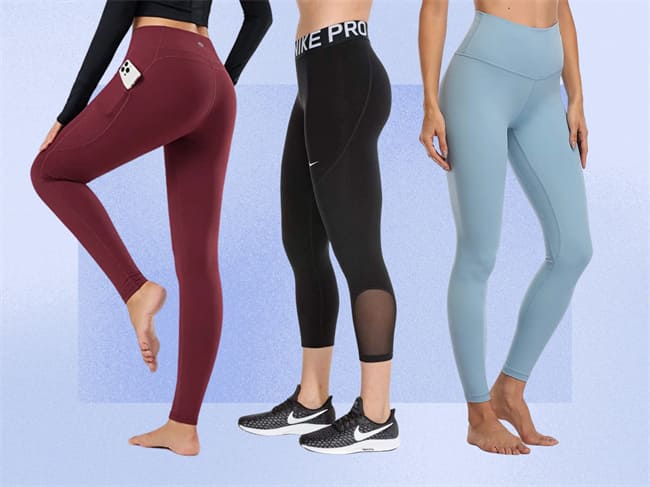Introduction
Finding the ideal bikini can be difficult, but making the appropriate fabric choice is crucial to making you feel and look your best. Having so many choices makes it challenging to know where to begin. In this post, we’ll look at the many kinds of fabric that are frequently used to make bikinis and offer advice on how to pick the best sort of fabric for your body shape, intended purpose, and personal style.

We’ll also give you pointers on how to look after your bikinis so they last longer. Read on to learn everything you need to know about bikini fabric, whether you’re heading the beach or relaxing by the pool.
Importance of choosing the right fabric material for a bikini
In order to appear good and feel comfortable while wearing a bikini, the fabric you choose is essential. In terms of fit, longevity, and general performance, the appropriate fabric choice may make a world of difference. A sturdy and quick-drying material like nylon or polyester, for instance, could be your best pick if you’re searching for a bikini that can survive the wear and tear of frequent swimming.
Nevertheless, silk or satin would be a better option if you want something that feels more opulent. The ideal fabric will ultimately rely on your particular preferences, body type, and planned use of the bikini. You can make sure you feel comfortable and confident wearing your new bikini by choosing the proper fabric.
Types of Bikini Fabric Material
There are several kinds of cloth that are frequently used to create bikinis. Each sort of cloth material has special qualities, benefits, and drawbacks. The following are some of the most common varieties of bikini fabric:
Nylon: it is a popular synthetic fabric for swimwear due to its strength, elasticity, and resistance to chlorine. It is lightweight and quick-drying.

Polyester: it is a synthetic material renowned for its toughness, longevity, and resistance to fading, stretching, and shrinking. Due to its capacity to keep its form and color after several items of washing, it is also a common option for swimwear.
Spandex: it is a synthetic material that is popular for form-fitting bikinis because of its stretchiness and capacity to adapt to the curve of the body.
Lycra: it is a prominent kind of spandex that is used to make high-performance swimwear because of its remarkable stretch and rebound qualities.
Cotton: it is a breathable, cozy natural material, although it might not be as strong or quick-drying as synthetic textiles.
Silk: it is an opulent, natural substance that is smooth and soft to the touch, but it can not be as strong or quick-drying as synthetic textiles.

Satin: it is a synthetic material that has a smooth, glossy surface and is frequently used to make elegant or trendy bikinis.
It’s crucial to think about aspects like durability, stretch, comfort, and upkeep when selecting a fabric for your bikini in order to choose the one that best meets your requirements.
Comparison
| Material | Advantage | Disadvantage |
|---|---|---|
| Nylon | Lightweight, Quick-drying, Durable | Not breathable |
| Polyester | Strong, Durable, Resistant to stretching | Not breathable |
| Spandex | Stretchy, Form-fitting | Easily deformed |
| Lycra | Stretch, Recovery Properties | More expensive |
| Cotton | Breathable, Comfortable | Easily deformed |
| Silk | Smooth, Soft and Comfortable | Not durable, Requires Care |
| Satin | Smooth | Not breathable |
Tips for Taking Care of Bikinis Made of Different Fabric Materials
General tips for all types of fabric material
- Rinse your bikini in lukewarm water after swimming to get rid of any salt, chlorine, or sand that might harm the fabric.
- While washing your bikini, use cold water and a moderate detergent. The cloth may shrink or stretch in hot water, and the color may also fade.
- Avoid wringing or twisting the cloth while washing your bikini by hand. Instead, spread it out flat to dry in the shade.
- When washing your bikini, stay away from using bleach or fabric softener since these products might harm the fabric.
- Don’t dry clean or iron your bikini. The cloth may be harmed and lose its form as a result of this.
- To protect the fabric, store your bikini in a cool, dry location away from heat and sunshine.
- No matter what kind of fabric your bikini is made of, you can make it last longer by following these easy suggestions, and you can keep it looking fantastic for many seasons to come.
Specific care instructions for each type of fabric material
Nylon: To eliminate chlorine or saltwater, rinse your nylon bikini with cold water after each use. Avoid using bleach or fabric softener when hand washing it in cold water with a moderate detergent. Instead of twisting or wringing the bikini to get rid of extra water, lay it flat to dry in the shade.
Polyester: To eliminate chlorine or seawater, rinse your polyester bikini with lukewarm water after each wear. Avoid using bleach or fabric softener when hand washing it in cold water with a moderate detergent. Instead of twisting or wringing the bikini to get rid of extra water, lay it flat to dry in the shade.
Spandex: Use a gentle detergent and cold water to hand wash your spandex bikini. Avoid using fabric softener or bleach. Instead of twisting or wringing the bikini to get rid of extra water, lay it flat to dry in the shade. Avoid placing the bikini in hot or direct sunshine since those elements might harm the fabric.

Lycra: To eliminate chlorine or saltwater, rinse your Lycra bikini with cold water after each wear. Avoid using bleach or fabric softener when hand washing it in cold water with a moderate detergent. Instead of twisting or wringing the bikini to get rid of extra water, lay it flat to dry in the shade.
Cotton: Cold water and a light detergent should be used to machine wash your cotton bikini. Avoid using fabric softener or bleach. Lay flat to dry in the shade or tumble dry on a low setting.

Silk: You can either dry clean or hand wash your silk bikini in cold water with a little detergent. Avoid placing the bikini in hot or direct sunshine since those elements might harm the fabric. Instead of twisting or wringing the bikini to get rid of extra water, lay it flat to dry in the shade.
Satin: Hand washes your satin bikini in cool water with a mild detergent. Do not use bleach or fabric softener. Instead of twisting or wringing the bikini to get rid of extra water, lay it flat to dry in a shady place.
According to these recommendations, you can make sure that your bikini lasts as long as possible while maintaining its caliber and beauty.
Conclusion
To sum up, while purchasing a bikini, choosing the appropriate fabric material is crucial. There are many different kinds of fabric materials available, each having special qualities, benefits, and drawbacks of its own. Considerations for materials should include things like stretchability, comfort, durability, and upkeep.
No matter the fabric, it’s crucial to take care of your bikini to make sure it lasts as long as possible. This entails rinsing it off after use, washing it in cold water with a light detergent, and staying away from harsh chemicals and high heat. You can maintain your bikini looking beautiful for many more seasons if you abide by these suggestions.




